Integrated watershed management
With the establishment of eight regional stations, research on rainfed biomass productivity and resource conservation strategies was initiated since 1954 onward. Data was generated on soil loss, runoff, peak discharge, specification of bunding, terracing, leveling and biomass production through improved agronomic practices to meet the then requirement of the states. Pioneering research on watershed hydrology with excellent gauging devices in 42 small watersheds was initiated at eight centres in 1956. Special emphasis was given to train executives and assistants to main Soil and Water Conservation Programmes in the Centre, State, Union Territories and neighbouring countries. A brief summary of the accomplishment is given in the following broad groups.
Integrated Watershed Management
·
Recharging
of aquifers through integrated
watershed management was demonstrated successfully
in Aravali foot hills of Haryana and Kurnool dist. Of Andhra Pradesh.
·
Pilot ORPs
such as Sukohmajri, Nanda, G.R. Halli, Fakot , 47 model watersheds and
other integrated watershed programmes for the simultaneous management of
land, vegetation rain water
horticulture, livestock and human
resources reshaped national policies.
·
The
watershed management clearly demonstrated the resilience in crops against
drought in the rainfall deficit year, 1987.
·
Non-monetary
inputs like contour cultivation, early sowing cover management of row
crops through legume
intercropping and narrow spacing (90 x 20
in maize) for reducing runoff and soil loss and increasing
production on moderately sloping lands were devised.
·
Organic
mulching @ 4 t/ha effectively erosion losses from 37 to 6 t/ha on 8% slope
having silty loam soils in alfisols of the Doon Valley and also increases
yield of the subsequent crop from 1.9 to 2.4 t/ha . Normal tillage with
live mulching (green manure grown in between maize rows) reduced runoff by
55% and soil loss by 60% at 4% slope. In vertisols, vertical mulching with
similar amount showed beneficial effects on crop yield and reduced runoff
and soil loss to a permissible limit.
·
Variably
graded bund for annual rainfall greater than 600 mm in permeable
soils and less than 600 mm in impermeable soils disposed excess water
safely. In red and lateritic soils, the practices of graded bunding
reduced runoff from 20 to 13% and soil from 4 to 01. t/ha. Conservation ditching was also suitable in
poorly drained vertisols.
·
Graded
trenches for 10-15% slopping areas in
high rainfall regions reduced runoff from 28 to 26% and
soil loss from 4 t/ha to negligible in red lateritic soils.
·
Runoff
farming with water harvesting, storage,
recycling, tapping of perennial flows and augmentation of well water for supplemental irrigation through conservation
practices has been very well received
by farmers. Lining with LDPE sheets reduced seepage but needed periodic
maintenance . In red and lateritic soils, farm ponds with 2.5 ha-cm
capacity of each hectare of catchment are recommended.
·
Utilization
of grasses and bushes in the vegetatively restored ravine land of Chambal,
Yamuna and Mahi were investigated. Grazing of 4-6 goats/ha had
no adverse effect on vegetation, soil characterization and
hydrological behaviour of the restored watershed.
·
Agroforestry
systems for different agro-ecological regions were evolved. In high
rainfall foot
hills of the Western Himalaya, intercropping of peach with cowpea
and turmetic from the second year onward is quite remunerative. Practices
of raising horticulture
in gravelly river beds were evolved. Reshaping of surface configurtion for
runoff horticulture was standardized. Lands with 33
to 50% slopes are suitable for horticultural plantations.
·
Restoration
of denuded area by revegetation, staggered contour trenching, mulching and
social fencing for sustainable soil and
water conservation are recommended in theShiwaliks.
·
Deep gullies
(greater than 9 m) were stabilized by constructing gully plugs,
small earthen check dams, live hedges, staggered contour trenches,
plantation of Dendrocalamus
strictus and other indigenous tree species.
·
Bioengineering
measures applied to 4204 ha of the Sukhana lake catchment of the Shiwalik
hills reduced runoff from 23 to 11% and soil loss from 150 to 15
t/ha over a period of 16 years..
·
Landslide in
the outer Himalaya (Mussoorie hills) were controlled with the help of
bioengineering measures, which
reduced fom 53 to 38 mm sediment flow from 320 to 5.5 t/ha has increased
dry weather flow from 100 to 250 days. Similar results were observed in
the Nilgiri hills.
·
Technology
involving bioengineering measures was developed for mine spoils
stabilization in the Himalayan foothills and the Deccan plateau. In
limestone minespoils watershed of 54 ha about 17,000 tonnes of debris was
stablised resulting in perennial flow of quality water
fit for consumption . The peak rate of runoff was moderated
drastically from 9.5 to 1.6 mm/hs.
Technology was also developed for the restoration of iron ore mine spoils in the lateritic region around Bellary (Karnataka)
Socio-economic
and Policy Issues
·
The
watershed management programme
made a significant impact on women. This programme increased their total
working hours, decreased the drudgery of collecting fuelwood and fetching
water and helped the women to devote more time
in better quality activities like making dairy products and on
children education.
·
A
comparative study of traditional skills and knowledge with respect of
watershed management revealed more than 90% variability in the income of
farmers between the adopted and control
watersheds and generated 58% extra income.
Institute has the excellent field and lab facilities for soil erosion research
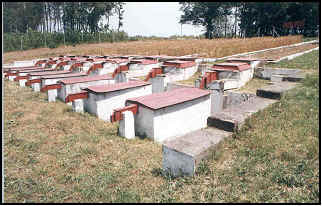
Run off plots
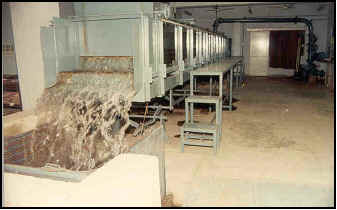
Hydraulic flume for model studies
Field research
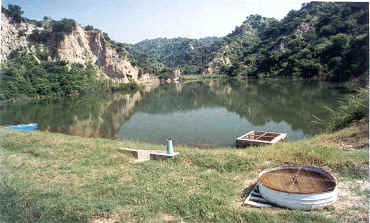
Integrated watershed management
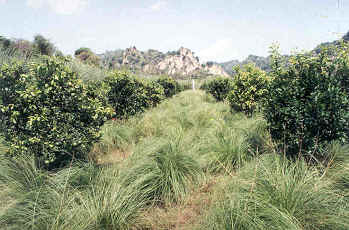
Horti-pastoral system in shiwalik foothills
Extension and demonstration
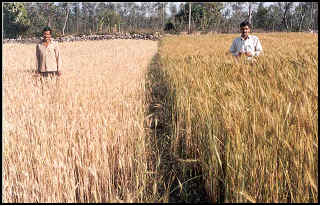
Improved varietal evaluation under IVLP
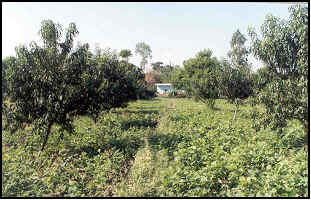
Peach based agro-horti system
Conservation measures
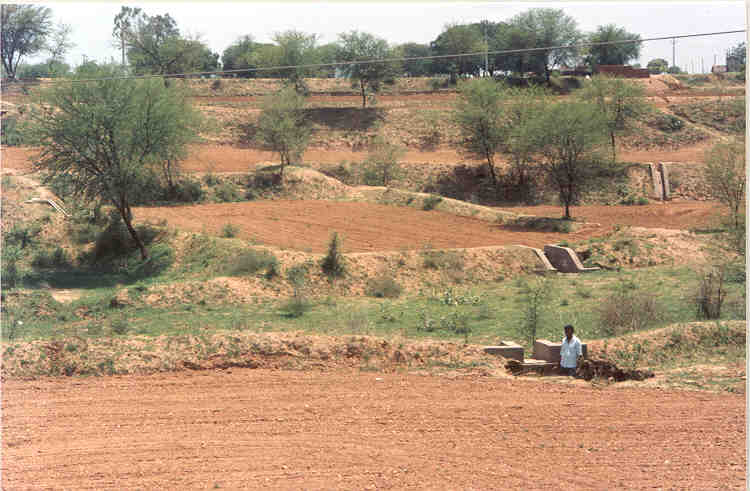
Bench terracing
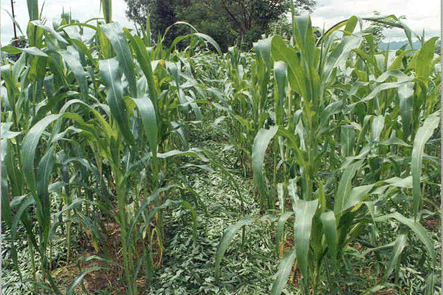
Live mulching
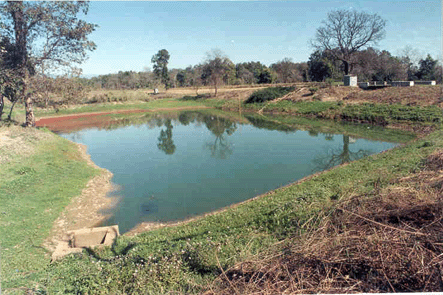
Farm pond for rain water harvesting
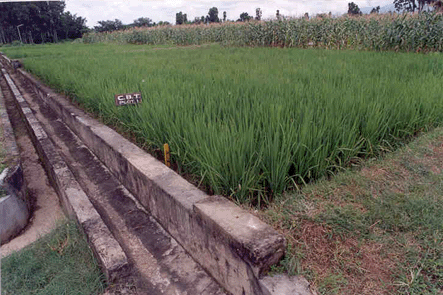
Conservation Bench
terracing
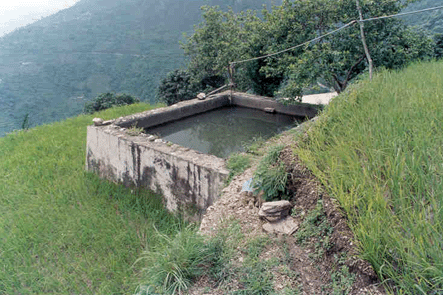
Tankas
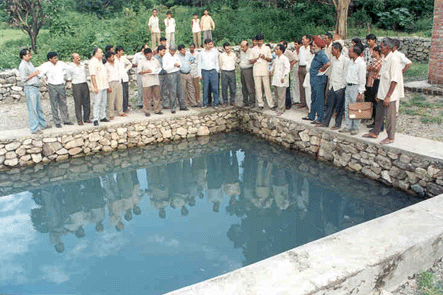
Sub-surface water harvesting
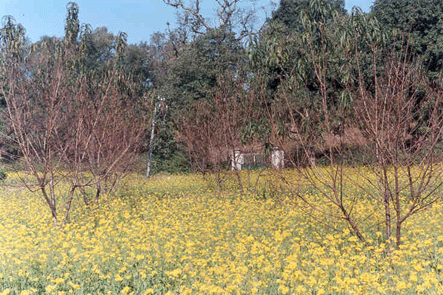
Peach based system
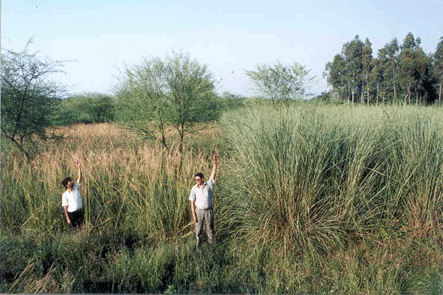
Restoration of vegetation